Mud kitchens have become increasingly popular outdoor play spaces that combine natural elements with imaginative play. These outdoor cooking stations provide children with opportunities for sensory exploration, creative expression, and hands-on learning while encouraging them to spend more time outdoors. From simple pallet constructions to elaborate café-themed setups, mud kitchens can be tailored to fit any space, budget, or design preference. Each design offers unique features and styling that create distinct play experiences, from rustic farmhouse charm to modern scientific laboratories. Whether you're building from scratch or converting existing furniture, these ideas will help you create an engaging outdoor play environment that children will treasure for years.
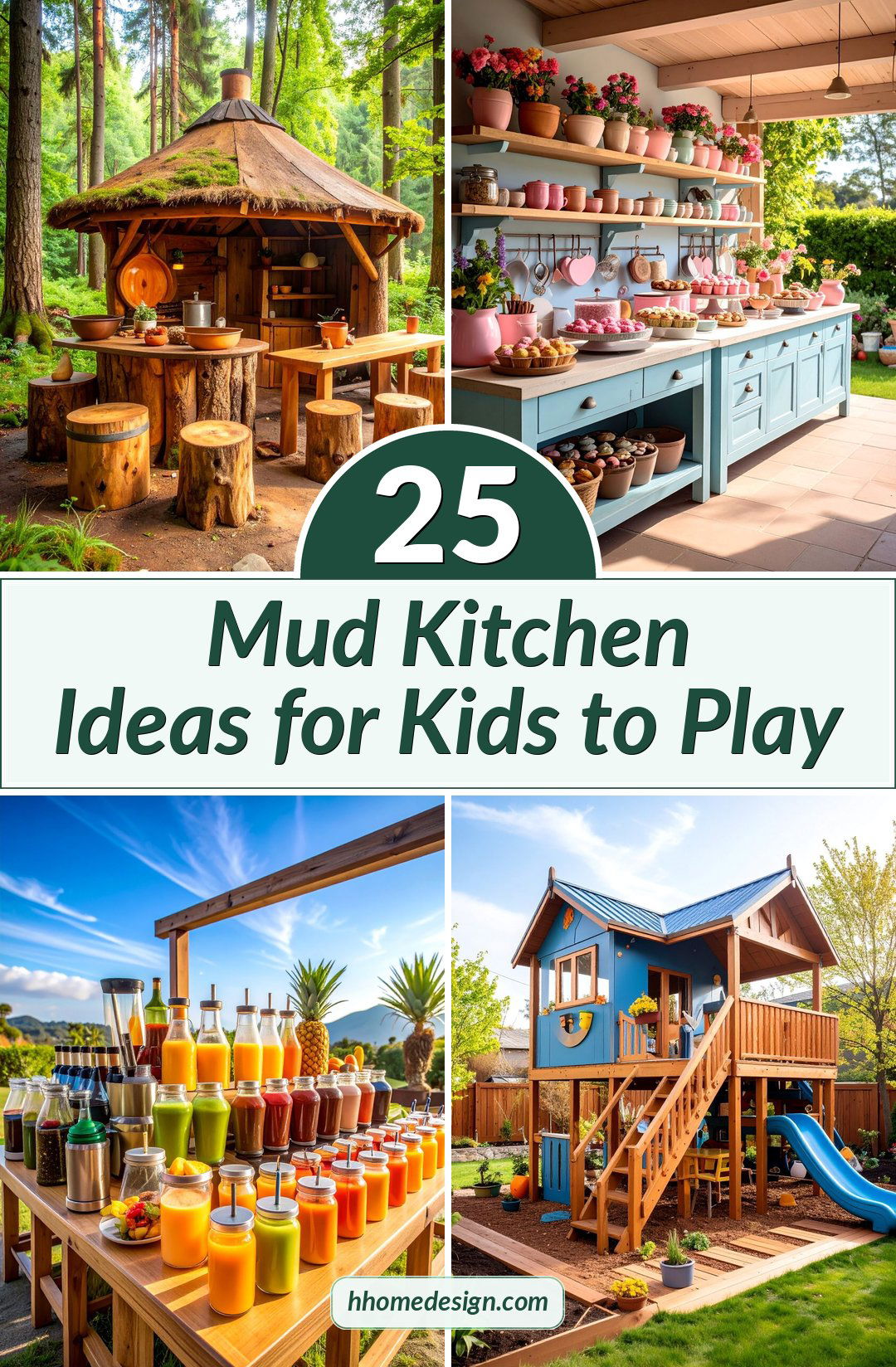
1. Rustic Pallet Mud Kitchen with Storage Shelves
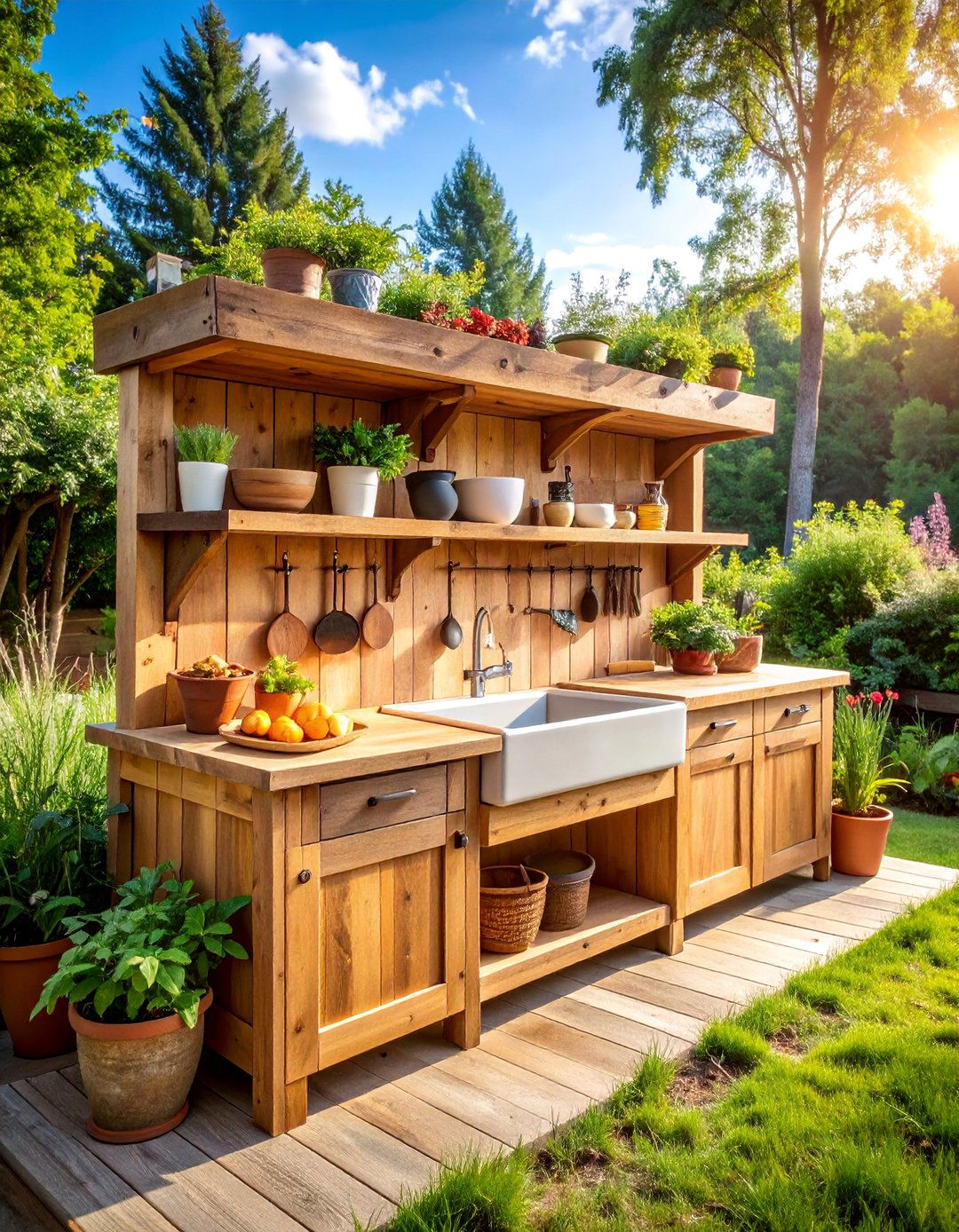
Create an authentic farmhouse-style mud kitchen using reclaimed wooden pallets and natural cedar materials. This design features multiple storage compartments built into the pallet structure, with open shelving for easy access to pots, pans, and natural ingredients. The weathered wood finish provides rustic charm while remaining durable against outdoor elements. Include hooks along the sides for hanging utensils and small containers. A large farmhouse-style basin serves as the main sink area, while the natural wood surfaces offer ample workspace for mud pie creation. The multi-level design accommodates children of different heights and provides distinct activity zones for collaborative play.
2. Outdoor Mud Café with Customer Seating Area

Transform outdoor play into a complete restaurant experience with a mud kitchen designed as a charming café. This theme includes a service counter, menu board, and dedicated seating area with small tables and chairs for "customers." Incorporate chalkboard elements for daily specials and pricing, plus a cash register area for transaction play. The kitchen area features multiple cooking zones, preparation surfaces, and storage for serving dishes. Add decorative elements like striped awnings, flower boxes, and vintage signage to enhance the café atmosphere. This design encourages social interaction, role-playing, and entrepreneurial thinking while developing communication skills and mathematical concepts through ordering and payment scenarios.
3. Science Laboratory Potion Station
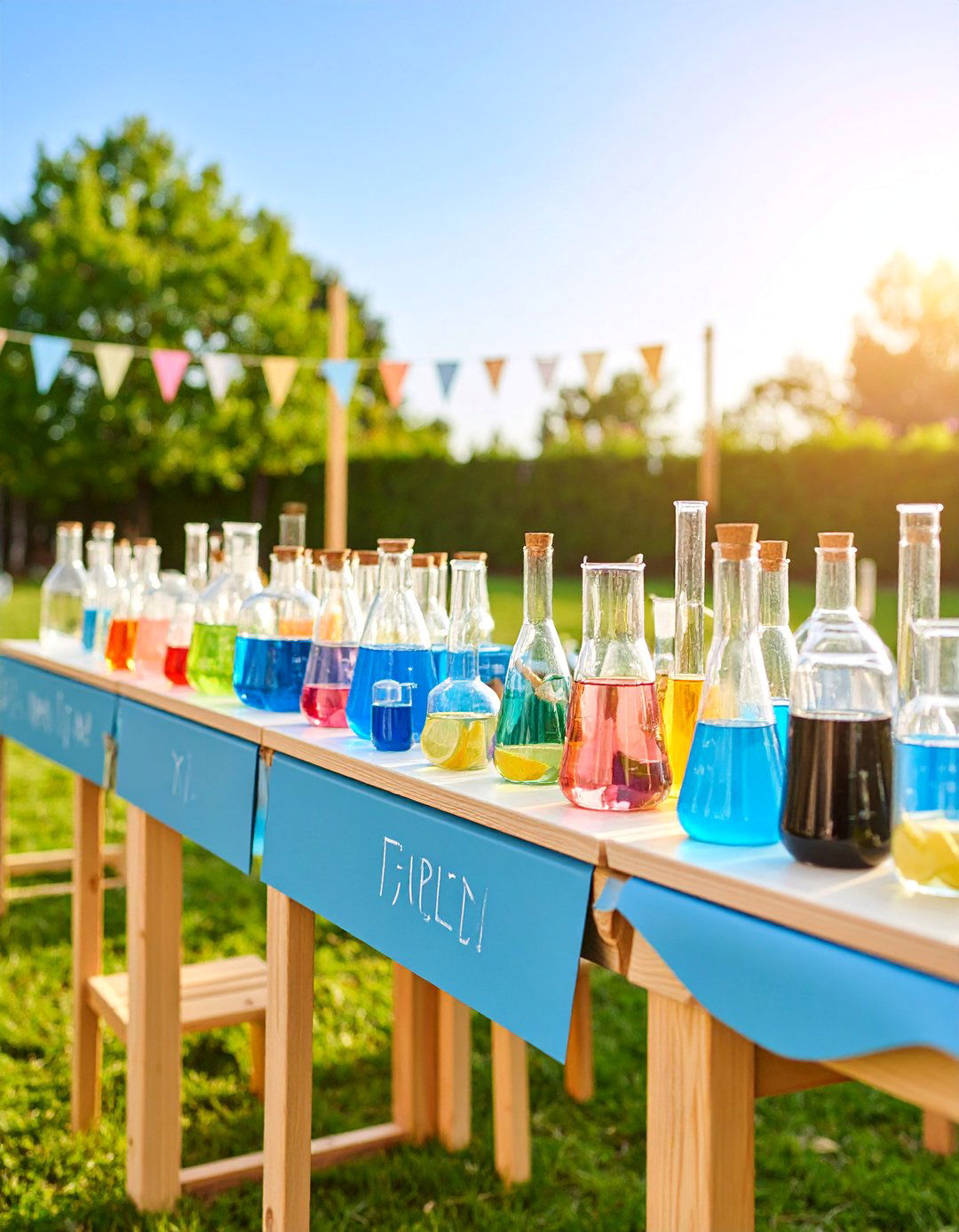
Design a magical outdoor laboratory where children can conduct nature-based experiments and create mysterious potions. This theme features multiple workstations with various containers, measuring tools, and ingredient storage areas. Include clear jars with labels for storing natural materials like leaves, flowers, seeds, and sand. The design incorporates scientific elements such as measuring cylinders, beakers, and pipettes adapted for outdoor use. Add a dedicated mixing area with mortars and pestles for grinding ingredients. Chalkboard labels allow children to document their recipes and discoveries. This educational approach combines science learning with imaginative play, encouraging observation skills, measurement concepts, and creative problem-solving through hands-on experimentation.
4. Converted Potting Bench with Running Water
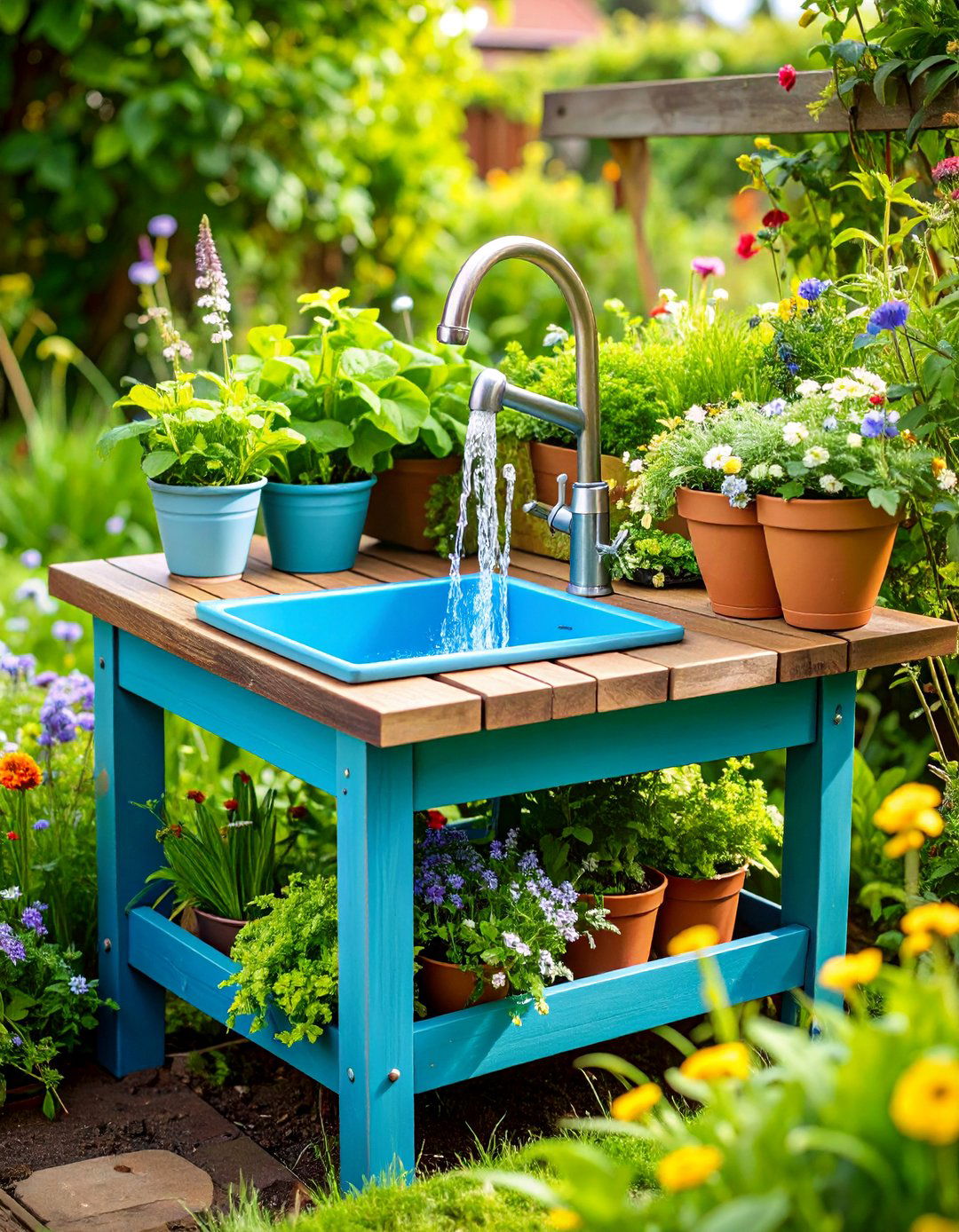
Transform a sturdy wooden potting bench into a fully functional mud kitchen with real running water capabilities. This design features a genuine sink installation with faucet connections to a garden hose system. The bench structure provides built-in storage compartments and multiple work surfaces at appropriate heights for children. Include weatherproofing treatments to protect the wood from moisture and outdoor conditions. The working sink adds authenticity to play while teaching water conservation through controlled usage. Additional features include towel hooks, soap dispensers, and organized storage for cooking utensils. This sophisticated option combines the convenience of real plumbing with the adventure of outdoor cooking, creating an authentic culinary experience.
5. Portable Mud Kitchen Cart on Wheels

Build a mobile mud kitchen that can be easily moved throughout the yard or stored when not in use. This design features heavy-duty wheels and a lightweight but sturdy construction using weather-resistant materials. The compact design includes fold-down work surfaces, removable storage containers, and adjustable height settings. Include a removable water basin and organized compartments for utensils and ingredients. The portable nature allows the kitchen to follow garden activities, move to different play areas, or be brought closer to adult supervision as needed. This flexibility makes it ideal for smaller yards, rental properties, or families who enjoy camping and outdoor adventures where portable play equipment enhances the experience.
6. Farmhouse Mud Kitchen with Built-in Herb Garden

Integrate a working herb garden directly into the mud kitchen design, creating a farm-to-table cooking experience. This design features raised planting beds built into the kitchen structure, allowing children to grow, harvest, and use real herbs in their culinary creations. The farmhouse styling includes weathered wood finishes, vintage hardware, and rustic accessories. Include designated areas for both mud cooking and fresh ingredient preparation. The herb garden sections can be planted with child-friendly herbs like mint, basil, and rosemary that add sensory elements through touch and smell. This design teaches gardening skills, plant life cycles, and connects children with food sources while providing fresh ingredients for imaginative cooking adventures.
7. Double-Station Mud Kitchen for Multiple Children
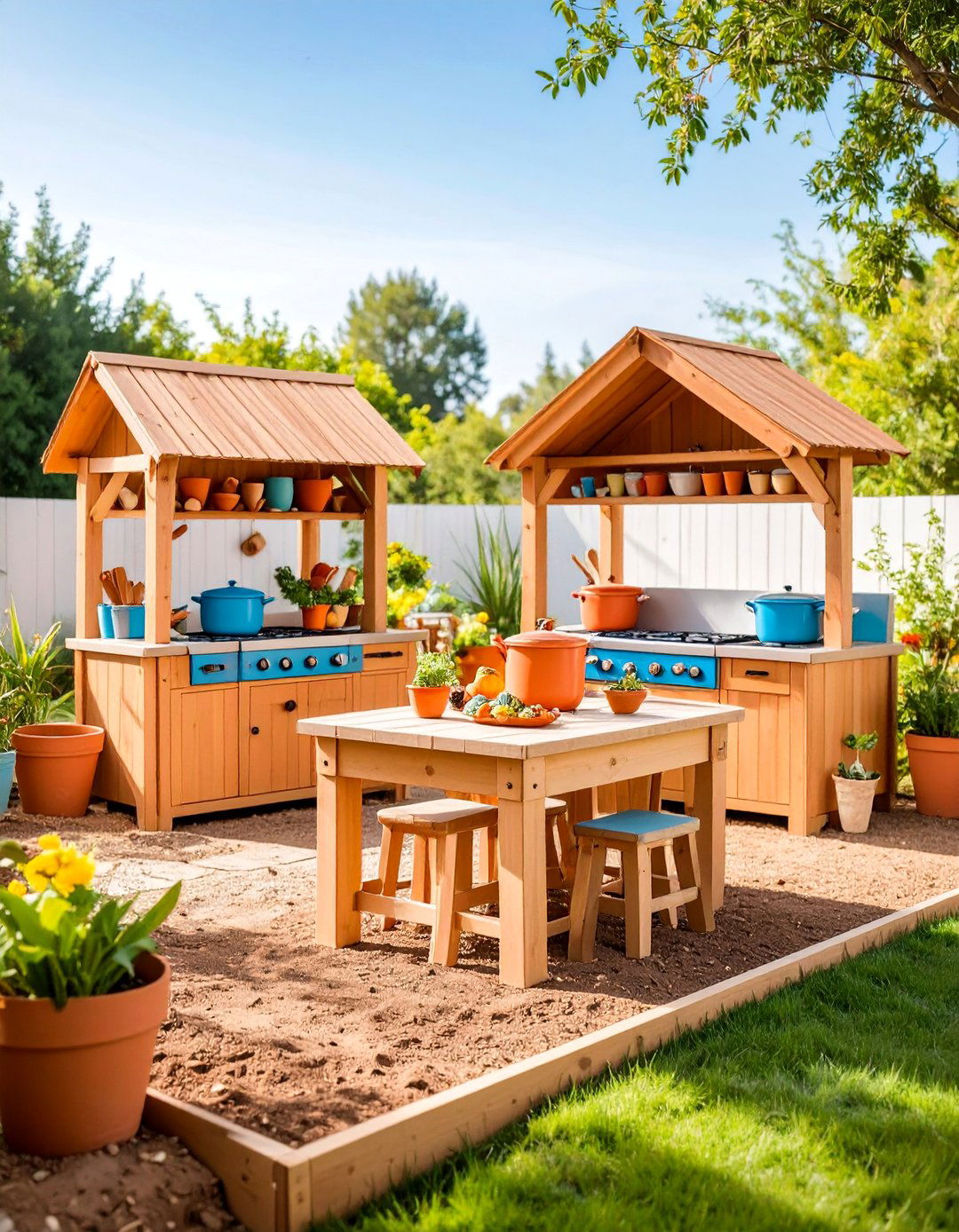
Create a spacious double-station mud kitchen designed for collaborative play between multiple children. This expanded design features two complete cooking areas with separate sinks, storage compartments, and work surfaces. The layout encourages cooperative play while providing individual space for creative expression. Include connecting elements like shared storage areas and common preparation zones that require teamwork. The design accommodates different play styles and age groups simultaneously, reducing conflicts over equipment access. Central storage islands provide organized space for shared utensils and ingredients. This larger-scale option works perfectly for families with multiple children, playgroups, or educational settings where several children need access to engaging outdoor play equipment simultaneously.
8. Mud Kitchen Bakery with Muffin Tin Storage

Design a specialized mud kitchen focused on baking themes with built-in storage for muffin tins, cookie sheets, and baking accessories. This design features multiple levels of workspace mimicking a professional bakery setup. Include dedicated areas for mixing, rolling, and shaping mud creations with specialized tools like rolling pins, cookie cutters, and measuring spoons. The storage system keeps baking supplies organized and easily accessible. Add display areas for finished "baked goods" and serving platters for presentation. Incorporate timer elements and temperature gauges for authentic play experiences. This themed approach develops mathematical concepts through measuring, counting, and fraction work while encouraging creativity and fine motor skill development through detailed baking activities.
9. Tree Stump Mud Kitchen with Natural Materials
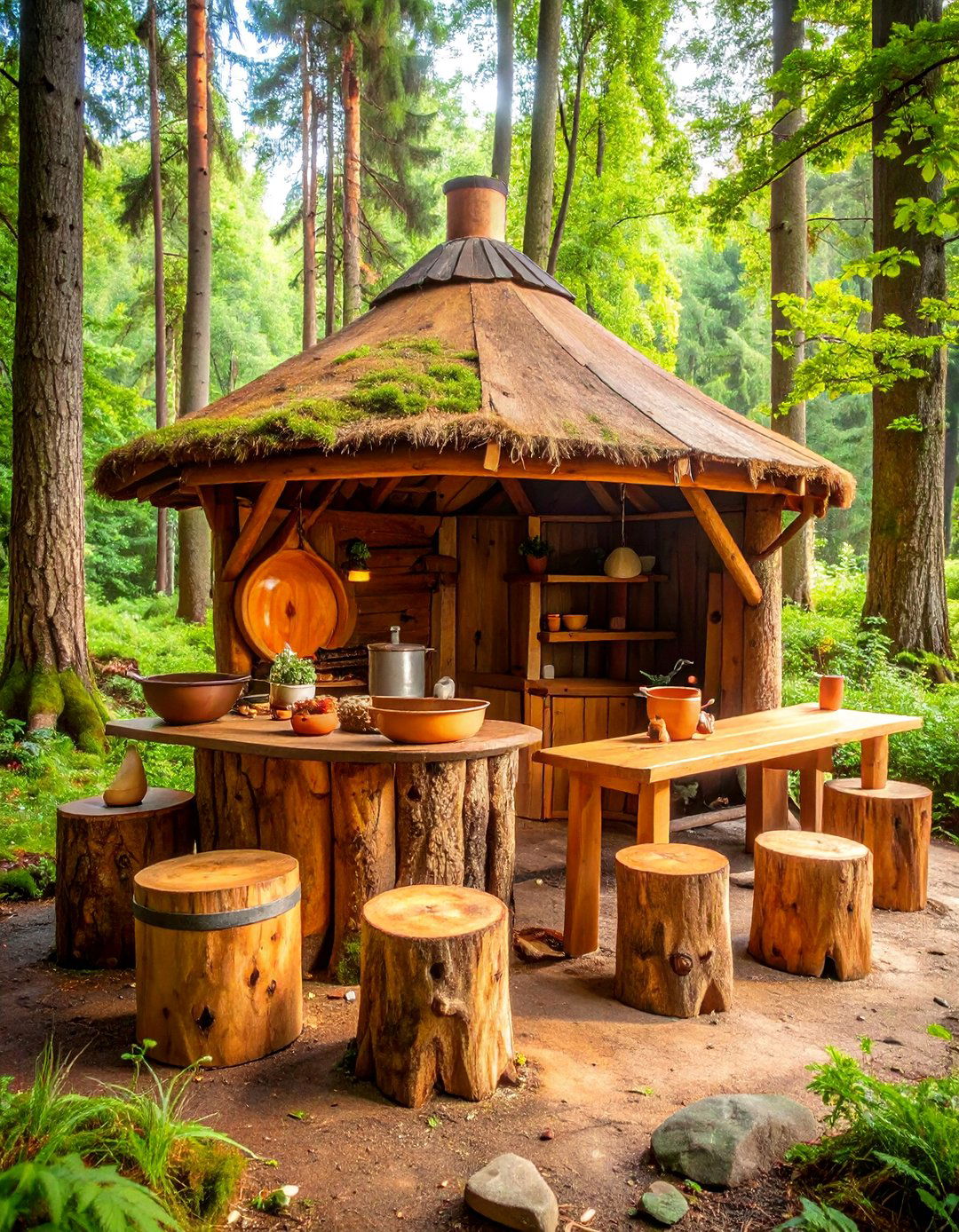
Create an organic mud kitchen using large tree stumps as the foundation and incorporating other natural materials throughout the design. This eco-friendly approach uses minimal processed materials while providing a unique, nature-integrated play experience. Arrange stumps of varying heights to create different work zones and seating areas. Use natural wood slabs for work surfaces and incorporate stone elements for texture variety. Include hollow logs for storage and natural fiber baskets for organization. The design blends seamlessly with outdoor environments and provides authentic textures and materials. This approach teaches environmental awareness and appreciation for natural resources while creating a play space that changes naturally with weather and seasons.
10. Mud Kitchen with Chalkboard Recipe Wall

Install a large chalkboard wall adjacent to the mud kitchen for recording recipes, drawing cooking illustrations, and educational activities. This design combines cooking play with literacy and artistic expression opportunities. The chalkboard area includes recipe templates, measurement guides, and space for creative drawings. Include chalk storage and erasers designed for outdoor use. The writing surface can be used for menu planning, grocery lists, and documenting successful recipe combinations. This educational component enhances language development, mathematical understanding, and creative expression while maintaining detailed records of cooking adventures. The visual element adds color and personality to the play area while providing endless opportunities for learning integration and educational play experiences.
11. Compact Corner Mud Kitchen Design

Maximize limited outdoor space with a corner-designed mud kitchen that fits efficiently into small yards or patio areas. This space-saving design utilizes corner angles to create maximum workspace within minimal footprint requirements. The triangular layout provides multiple work zones while maintaining easy access from all sides. Include vertical storage solutions and hanging organizers to optimize limited space. The compact design features fold-down work surfaces and removable components for storage when not in use. Despite its smaller size, the kitchen includes all essential elements including sink area, storage, and preparation surfaces. This efficient option proves that engaging outdoor play doesn't require large amounts of space or extensive construction projects.
12. Mud Kitchen with Working Oven Box
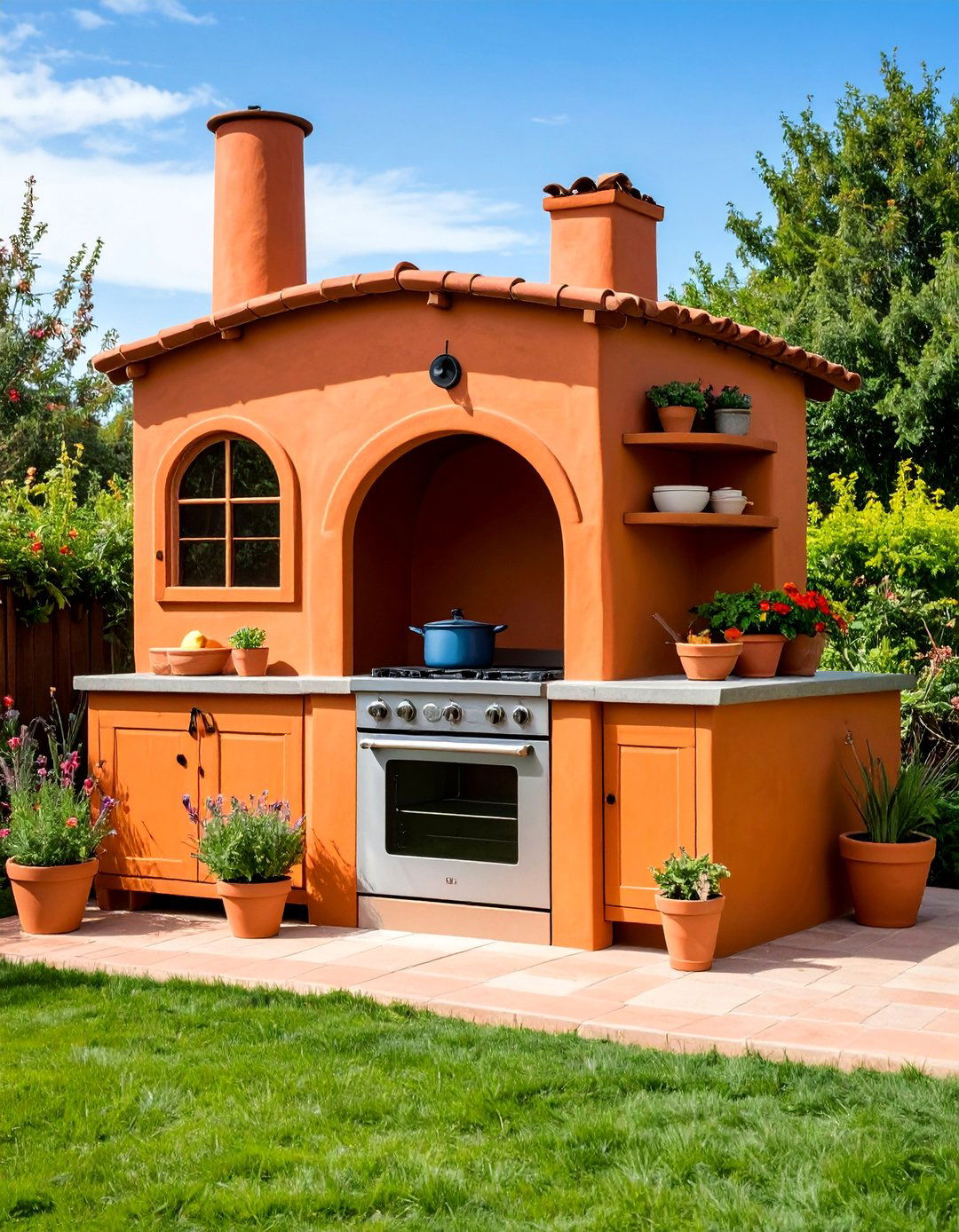
Add authentic cooking drama with a functional oven compartment featuring opening doors and interior shelving. This design includes a large storage box positioned at appropriate height with secure hinges and authentic hardware. The oven interior features removable shelves for multiple "baking" levels and realistic cooking scenarios. Include temperature controls, timer elements, and interior lighting for enhanced realism. The oven compartment can double as storage when not actively used in play scenarios. This feature encourages extended play narratives and develops understanding of cooking processes and kitchen appliance functions. The working door mechanism provides satisfying sensory feedback while teaching basic mechanical concepts and developing hand-eye coordination through repeated opening and closing actions.
13. Water Play Integration Mud Kitchen

Combine mud kitchen activities with dedicated water play features including splash zones and drainage systems. This design incorporates water tables, pump mechanisms, and controlled water flow systems for diverse sensory experiences. Include multiple water sources at different heights and flow rates to accommodate various play preferences. The drainage system manages water runoff while maintaining clean play areas. Add features like hand-pumps, water wheels, and flow channels that demonstrate cause-and-effect relationships. This design provides cooling relief during hot weather while teaching scientific concepts about water movement, pressure, and conservation. The combined mud and water elements create endless possibilities for creative play scenarios and scientific exploration through hands-on experimentation.
14. Mud Kitchen Ice Cream Parlor Theme

Transform the mud kitchen into a charming ice cream parlor complete with serving stations and customer seating. This themed design features specialized scooping tools, cone holders, and sundae-making stations. Include colorful containers for various "flavors" and toppings made from natural materials like colored sand, flower petals, and leaves. The serving area includes display cases, spoon holders, and napkin dispensers for authentic ice cream shop experiences. Add menu boards featuring creative flavor names and pricing for mathematical learning opportunities. The parlor theme encourages entrepreneurial play, customer service skills, and creative thinking while developing fine motor skills through scooping and serving actions. This sweet theme provides year-round entertainment regardless of weather conditions.
15. Elevated Mud Kitchen on Platform
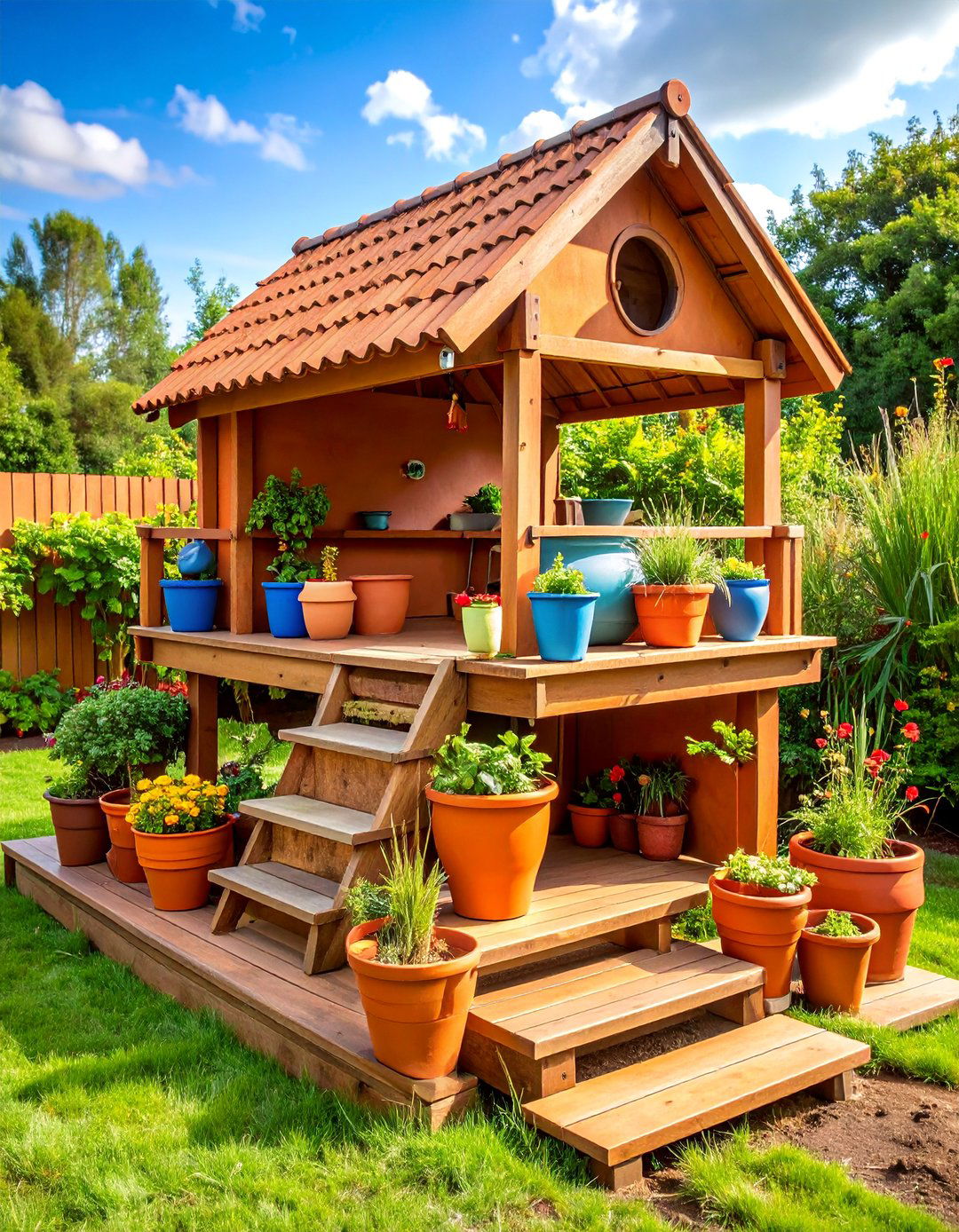
Build an elevated mud kitchen platform that provides better access for children while creating storage space underneath. This raised design improves ergonomics and reduces back strain during extended play periods. The platform elevation creates natural drainage and keeps the kitchen area cleaner during wet weather. Include steps or ramps for safe access and safety railings where appropriate. The underneath space provides covered storage for large items, seasonal equipment, and weather protection for supplies. This elevated approach also creates a more prominent focal point in the yard while providing better supervision sight lines for adults. The platform design can incorporate multiple levels for varied activity zones and age-appropriate access points.
16. Sensory Mud Kitchen with Texture Stations

Design a mud kitchen specifically focused on sensory exploration with various texture stations and tactile experiences. This specialized design includes containers filled with different materials like sand, rice, beans, and natural elements. Each station offers unique sensory feedback through varied textures, temperatures, and resistance levels. Include tools specifically designed for sensory exploration like textured scoops, bumpy rollers, and materials with different weights. The design accommodates children with sensory processing needs while providing engaging experiences for all users. Organization systems keep different textures separated and easily accessible. This therapeutic approach supports sensory development while maintaining the creative and imaginative aspects of traditional mud kitchen play through comprehensive sensory integration opportunities.
17. Mud Kitchen with Built-in Composting System

Integrate environmental education with an attached composting system that demonstrates natural recycling processes. This eco-friendly design includes designated areas for food scraps, leaf collection, and compost management. The composting element teaches children about decomposition, soil creation, and environmental responsibility. Include clear viewing areas where children can observe the composting process and understand how organic materials transform over time. The system provides natural soil amendments for any attached garden areas. This educational component connects kitchen play with environmental science while demonstrating practical sustainability concepts. The design encourages responsible waste management and develops understanding of natural cycles through hands-on observation and participation in environmentally beneficial activities.
18. Adventure-Themed Mud Kitchen Camping Style

Create an outdoor adventure experience with a camping-themed mud kitchen featuring rustic materials and outdoor cooking elements. This design incorporates elements like camp stools, lantern hooks, and trail cooking equipment. Use weathered wood, rope details, and camping accessories to enhance the outdoor adventure atmosphere. Include features like pretend campfire areas, hiking supply storage, and nature collection displays. The camping theme encourages appreciation for outdoor activities and simple living concepts. Add elements like compass decorations, trail maps, and outdoor adventure books to enhance the theme. This design promotes physical activity, environmental awareness, and outdoor skills while maintaining creative cooking play opportunities. The adventure theme inspires exploration and develops appreciation for nature and outdoor recreation activities.
19. Mud Kitchen Smoothie and Juice Bar

Transform the mud kitchen into a health-focused smoothie bar with specialized equipment for blending and serving natural concoctions. This design features multiple mixing stations, ingredient storage for various natural materials, and serving areas with cups and straws. Include manual mixing tools, strainers, and measuring devices for creating complex recipes. The bar setup encourages healthy eating discussions and ingredient recognition through play. Add menu boards featuring creative smoothie names made from natural ingredients like "Dandelion Delight" and "Acorn Almond." This theme promotes nutrition education while developing measuring skills and creative thinking. The serving aspect encourages social interaction and customer service skills while creating opportunities for discussing healthy food choices and natural ingredient benefits.
20. Multi-Level Mud Kitchen with Upper Deck

Build a two-story mud kitchen featuring an upper deck area for additional play space and storage options. This ambitious design creates distinct activity zones with the lower level focusing on heavy cooking activities and the upper level providing elevated workspace and observation areas. Include safe access via stairs or ramps and appropriate safety railings throughout. The upper deck can feature lighter activities like herb drying, reading cooking books, or overseeing lower-level activities. This design maximizes vertical space utilization while creating dramatic play opportunities. The multi-level approach accommodates different age groups and play preferences simultaneously. Additional storage throughout both levels keeps supplies organized and easily accessible while creating impressive architectural interest in the outdoor play area.
21. Vintage-Style Mud Kitchen with Antique Accessories
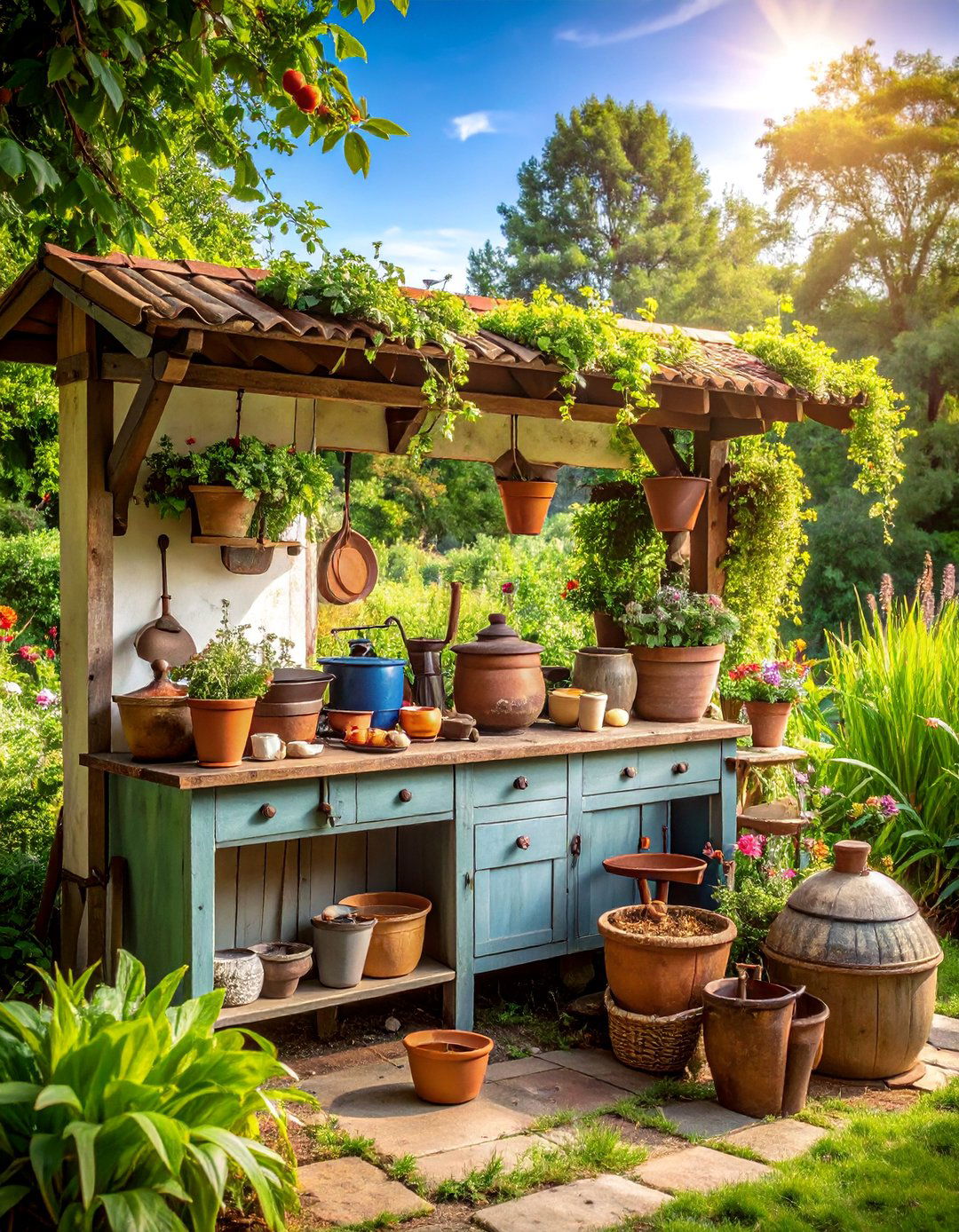
Design a nostalgic mud kitchen using vintage-inspired materials and authentic antique accessories for historical play experiences. This theme incorporates elements like old-fashioned scales, vintage containers, and period-appropriate tools. Use distressed finishes, metal accents, and classic color schemes to achieve authentic vintage aesthetics. Include elements like butter churns, vintage egg beaters, and old-style canning jars for historical accuracy. The vintage theme provides opportunities for discussing historical cooking methods and lifestyle differences. Add elements like vintage recipe cards, old cookbook displays, and period-appropriate aprons for enhanced authenticity. This educational approach connects children with historical understanding while maintaining engaging play experiences through authentic materials and tools that demonstrate how cooking and food preparation have evolved.
22. Mud Kitchen Pizza Oven and Pizzeria
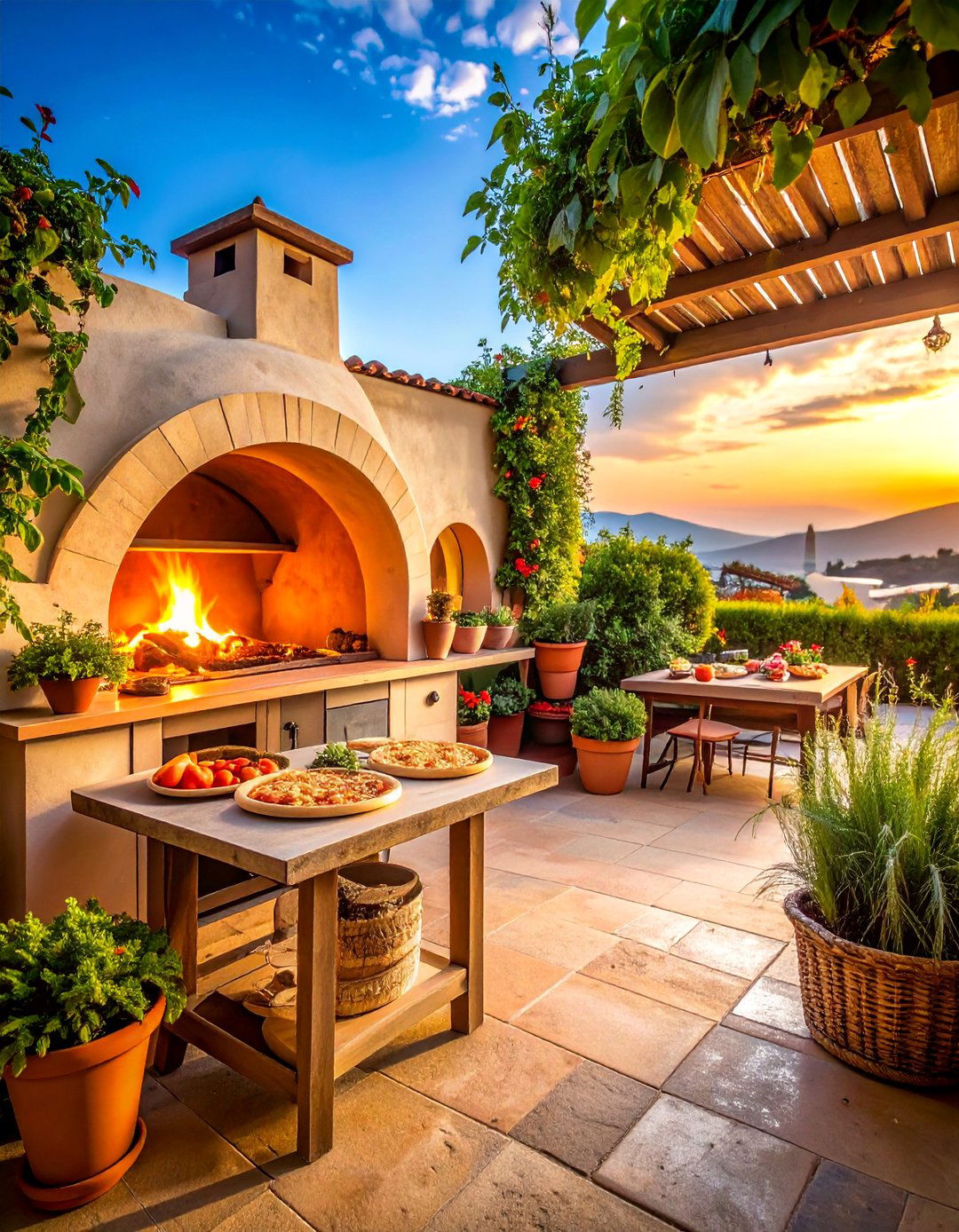
Create an Italian-inspired pizzeria complete with pizza oven design and specialized pizza-making tools. This themed design features a large oven compartment designed for pizza "baking" with appropriate shelving and realistic details. Include pizza peels, rolling pins, and circular workspace for dough preparation. The design incorporates Italian styling with checkered patterns, rustic materials, and Mediterranean color schemes. Add seating areas for pizza enjoyment and menu boards featuring creative pizza combinations using natural ingredients. This theme encourages cultural awareness and international cuisine appreciation while developing fine motor skills through dough manipulation and topping arrangement. The pizzeria concept promotes entrepreneurial thinking and mathematical concepts through ordering, pricing, and serving calculations while providing engaging dramatic play opportunities.
23. Garden-to-Table Mud Kitchen with Raised Beds

Integrate multiple raised garden beds directly connected to the mud kitchen for authentic farm-to-table cooking experiences. This comprehensive design teaches complete food cycles from planting through harvesting to cooking preparation. The raised beds feature child-appropriate heights and easy-access positioning for garden maintenance activities. Include tool storage, watering systems, and plant identification markers for complete gardening education. The design connects gardening activities with cooking play while demonstrating food source understanding. Add elements like harvest baskets, seed storage, and growing guides for comprehensive agricultural education. This integrated approach develops environmental awareness, responsibility, and patience while providing fresh ingredients for cooking activities. The garden connection creates year-round learning opportunities through seasonal planting and harvesting cycles.
24. Mud Kitchen Building Supply Store Theme
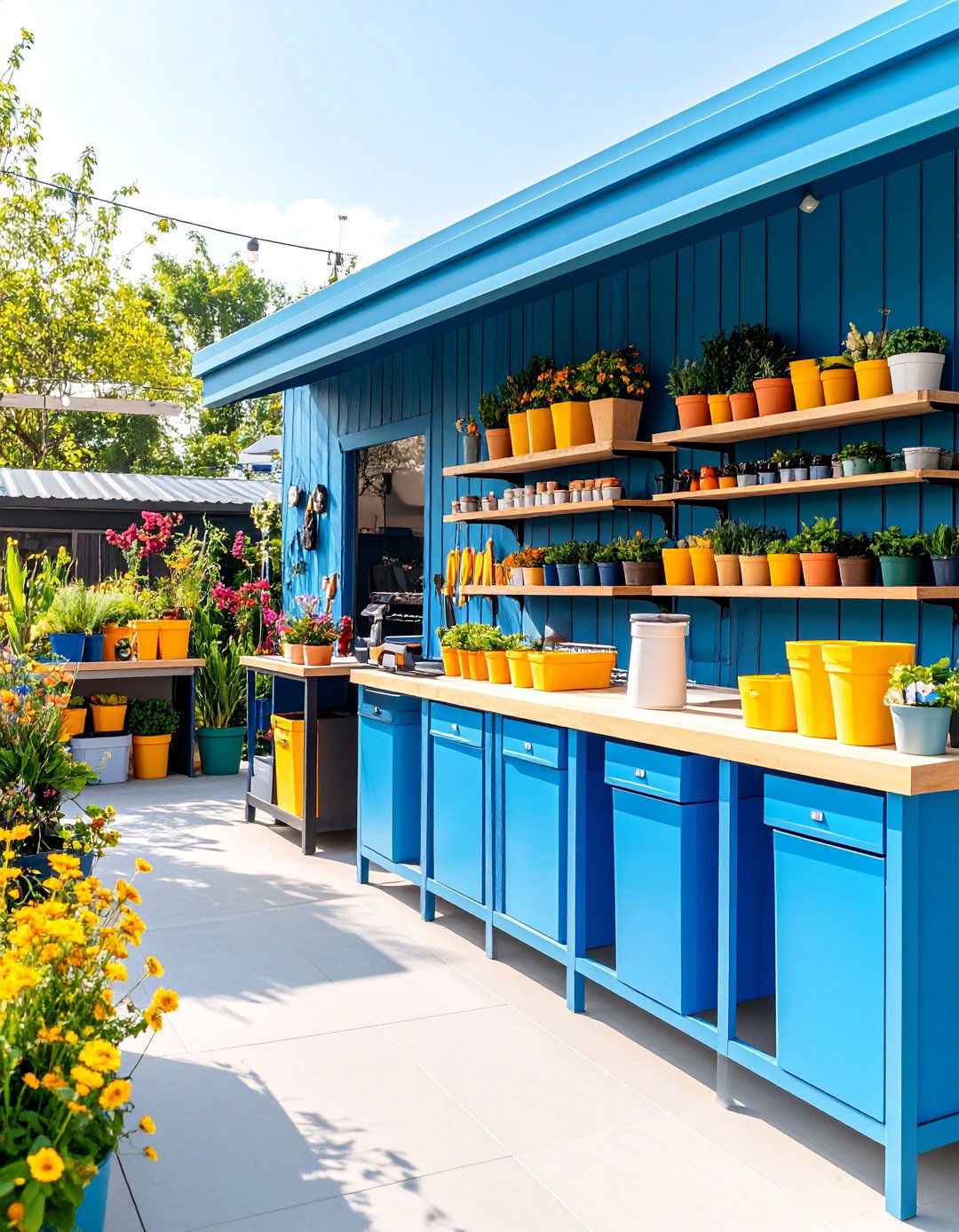
Transform the mud kitchen into a building supply store where children can "purchase" natural materials for construction projects. This creative theme combines cooking play with building activities using natural materials like sticks, stones, and mud as construction supplies. Include scale systems for weighing materials, storage bins for different building supplies, and checkout areas for transaction play. The design encourages mathematical thinking through measuring, weighing, and pricing activities. Add elements like hard hats, tool belts, and measuring tools for authentic construction play. This unique theme develops spatial reasoning, engineering concepts, and problem-solving skills while maintaining creative play opportunities. The construction focus promotes building activities and develops understanding of materials, structures, and basic engineering principles through hands-on exploration.
25. Seasonal Transformation Mud Kitchen Design

Create a flexible mud kitchen design that easily transforms to match seasonal themes and activities throughout the year. This adaptable design features removable decorative elements, changeable storage systems, and flexible workspace configurations. Include seasonal decoration storage and easy-change signage systems for quick theme updates. The design accommodates spring planting themes, summer water play, autumn harvest activities, and winter indoor storage needs. Add weather-resistant materials that withstand seasonal changes while maintaining functionality year-round. This versatile approach maximizes long-term usage value while keeping play experiences fresh and engaging. The seasonal adaptation encourages awareness of natural cycles and weather changes while providing varied learning opportunities throughout different times of the year through thematic play experiences.
Conclusion:
These 25 mud kitchen ideas demonstrate the incredible versatility and educational potential of outdoor play spaces. From simple pallet constructions to elaborate themed environments, each design offers unique opportunities for creative expression, sensory exploration, and skill development. Whether focusing on imaginative play, scientific learning, or social interaction, mud kitchens provide invaluable outdoor experiences that connect children with nature while developing essential life skills through hands-on discovery and creative play.





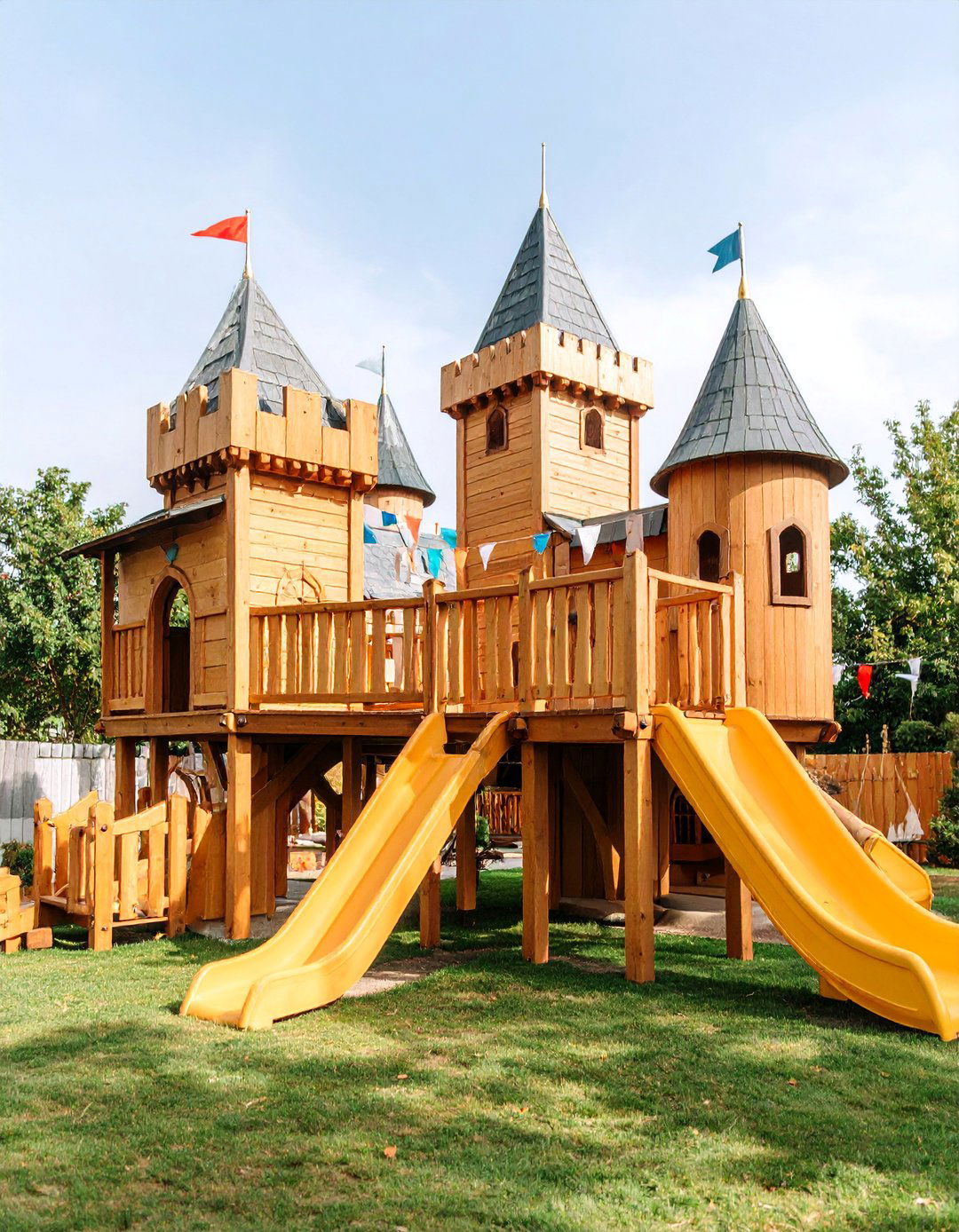

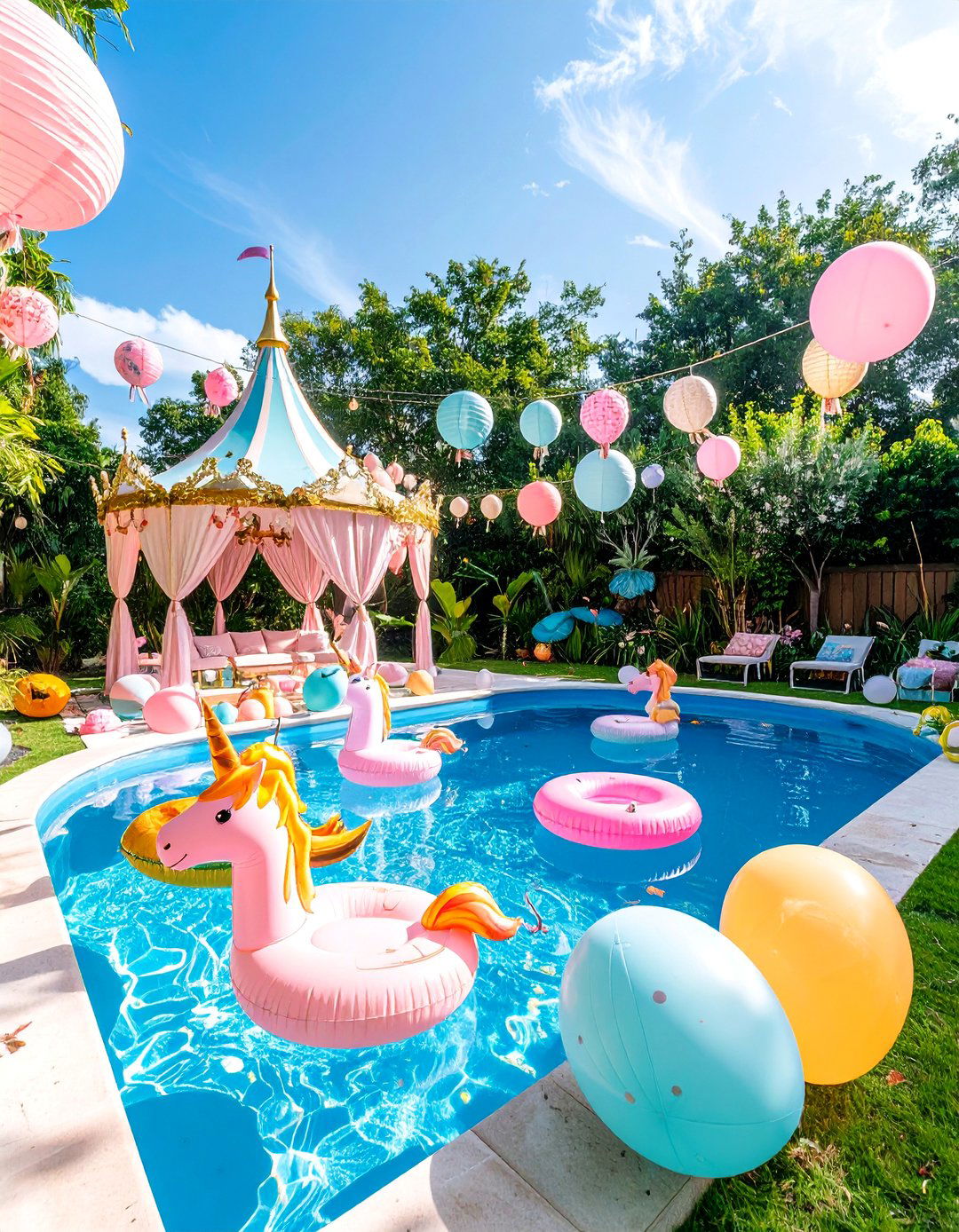
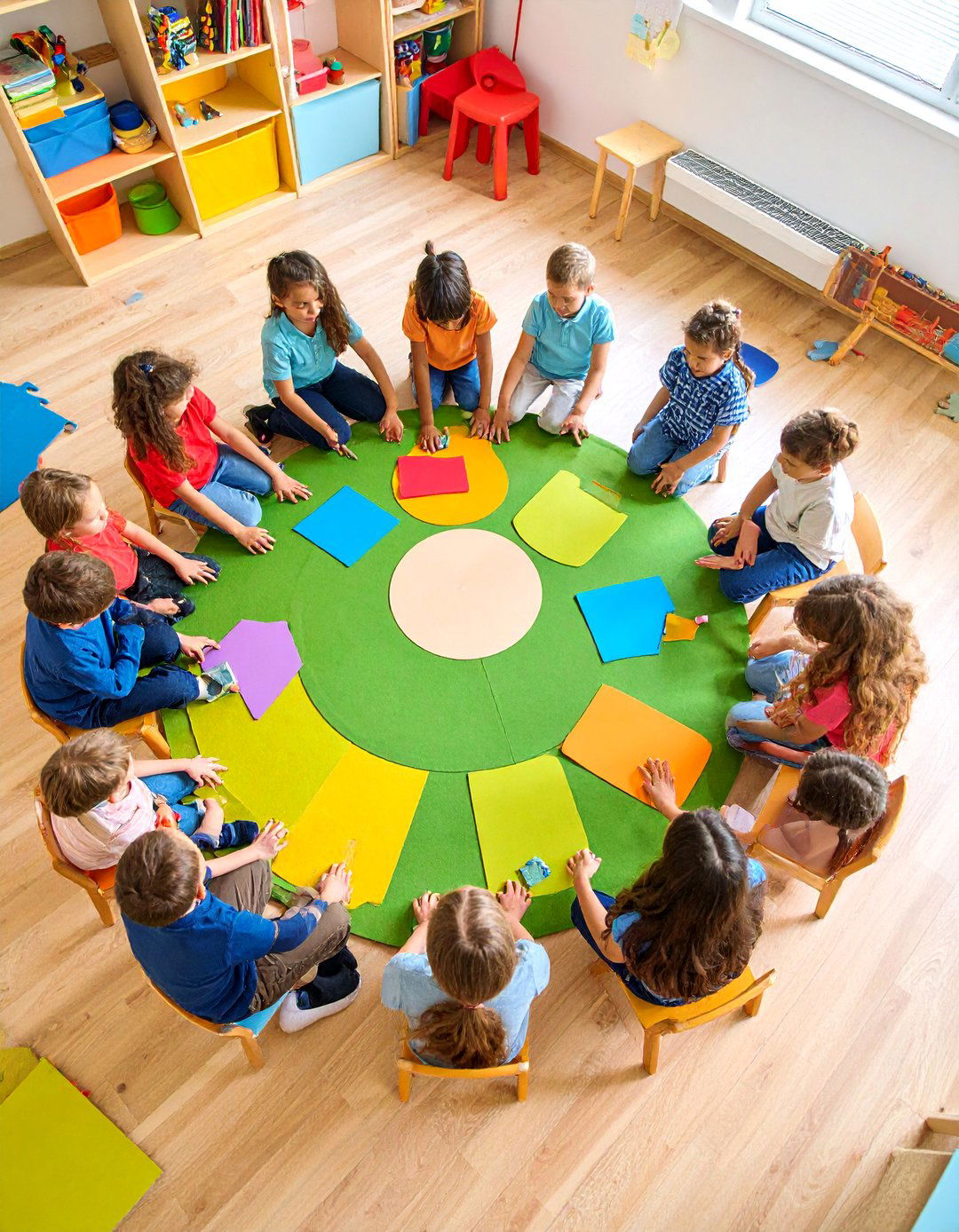

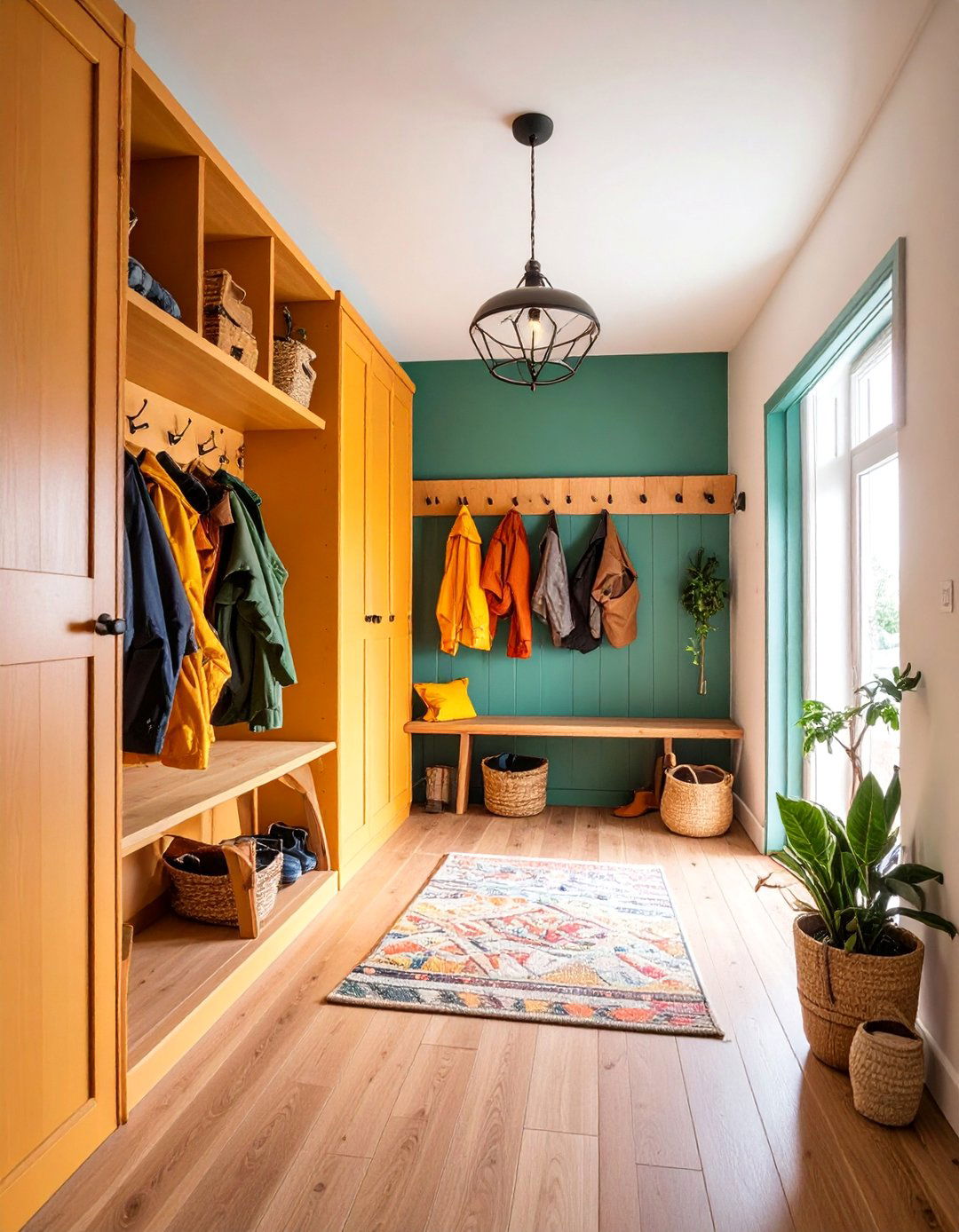
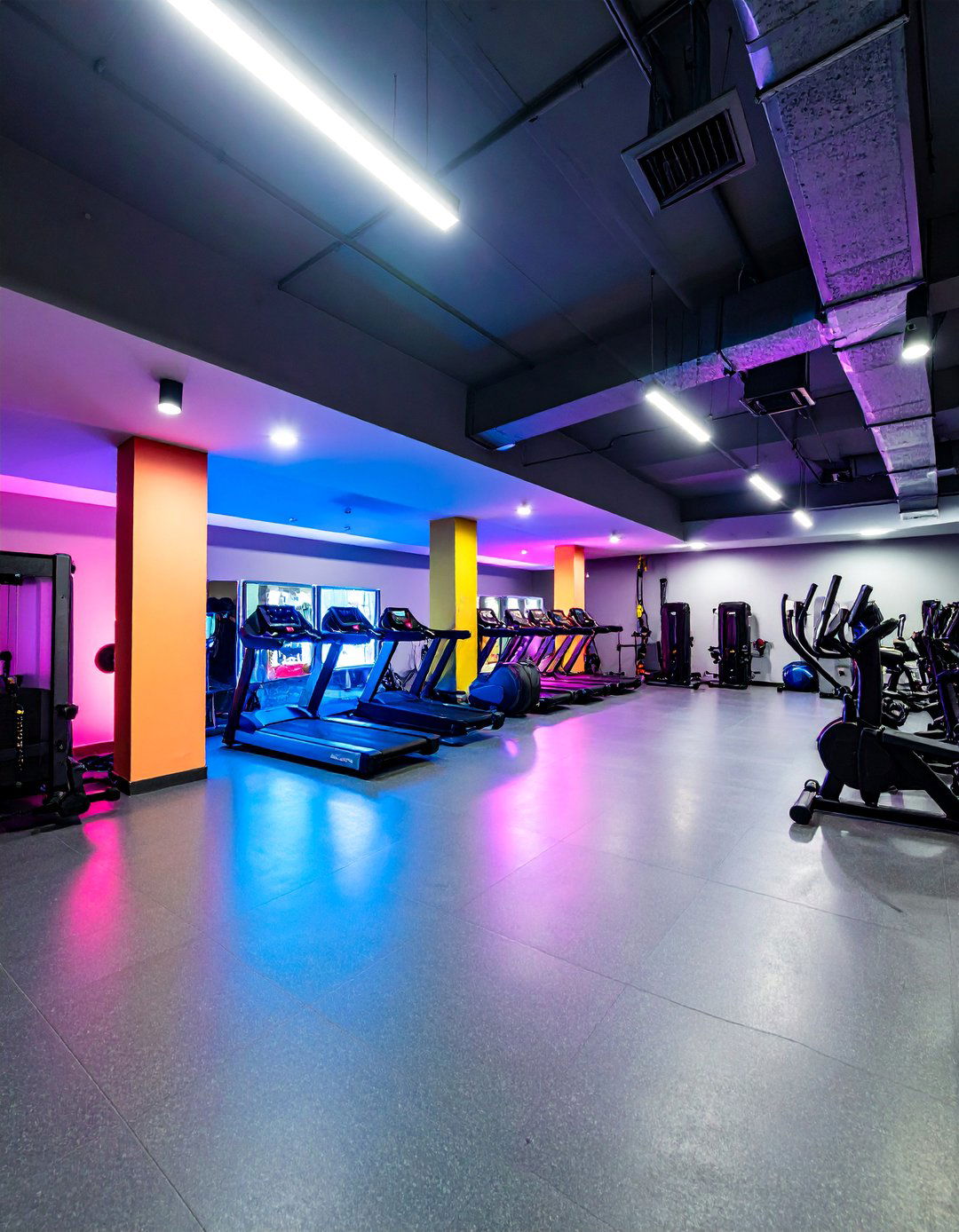


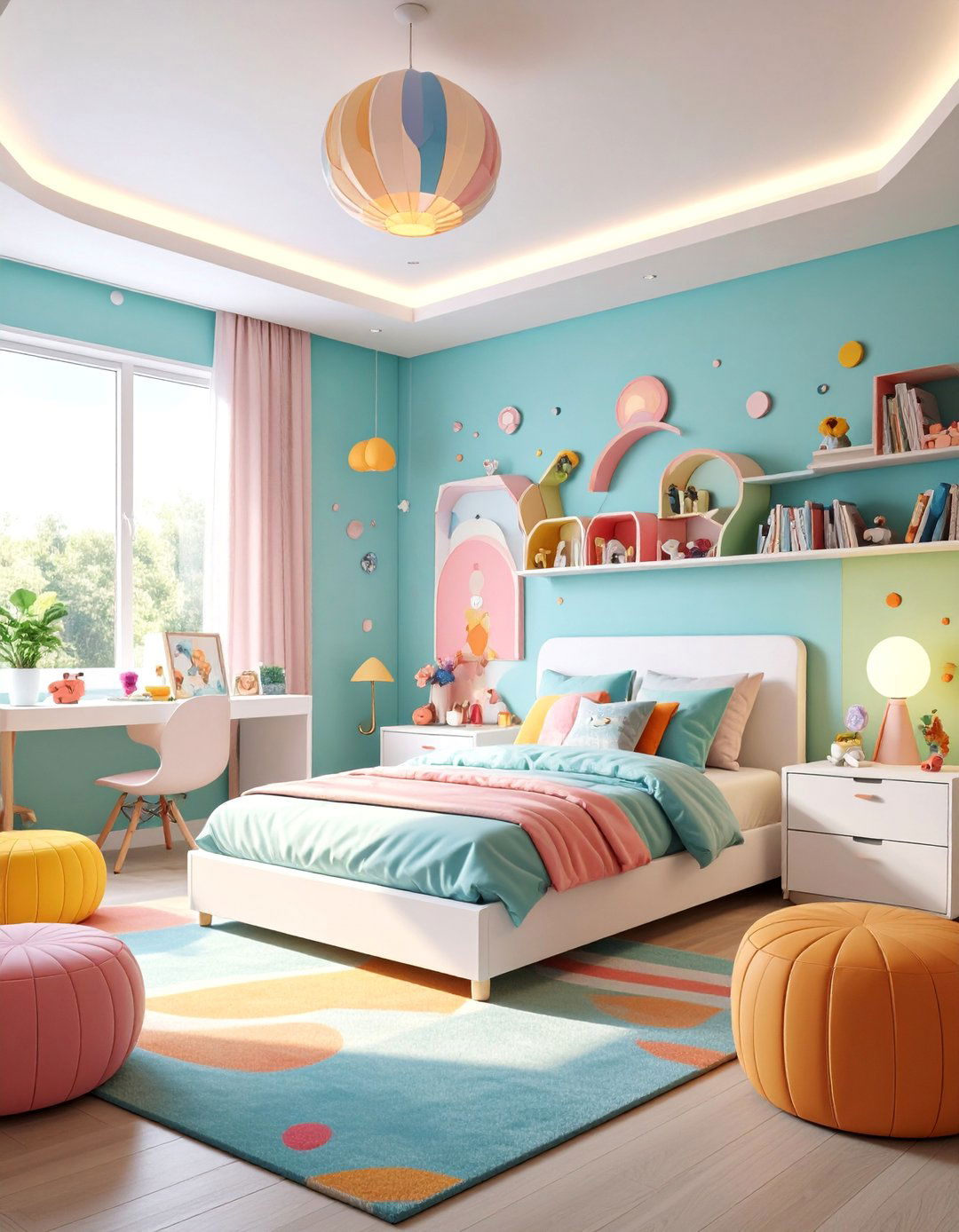
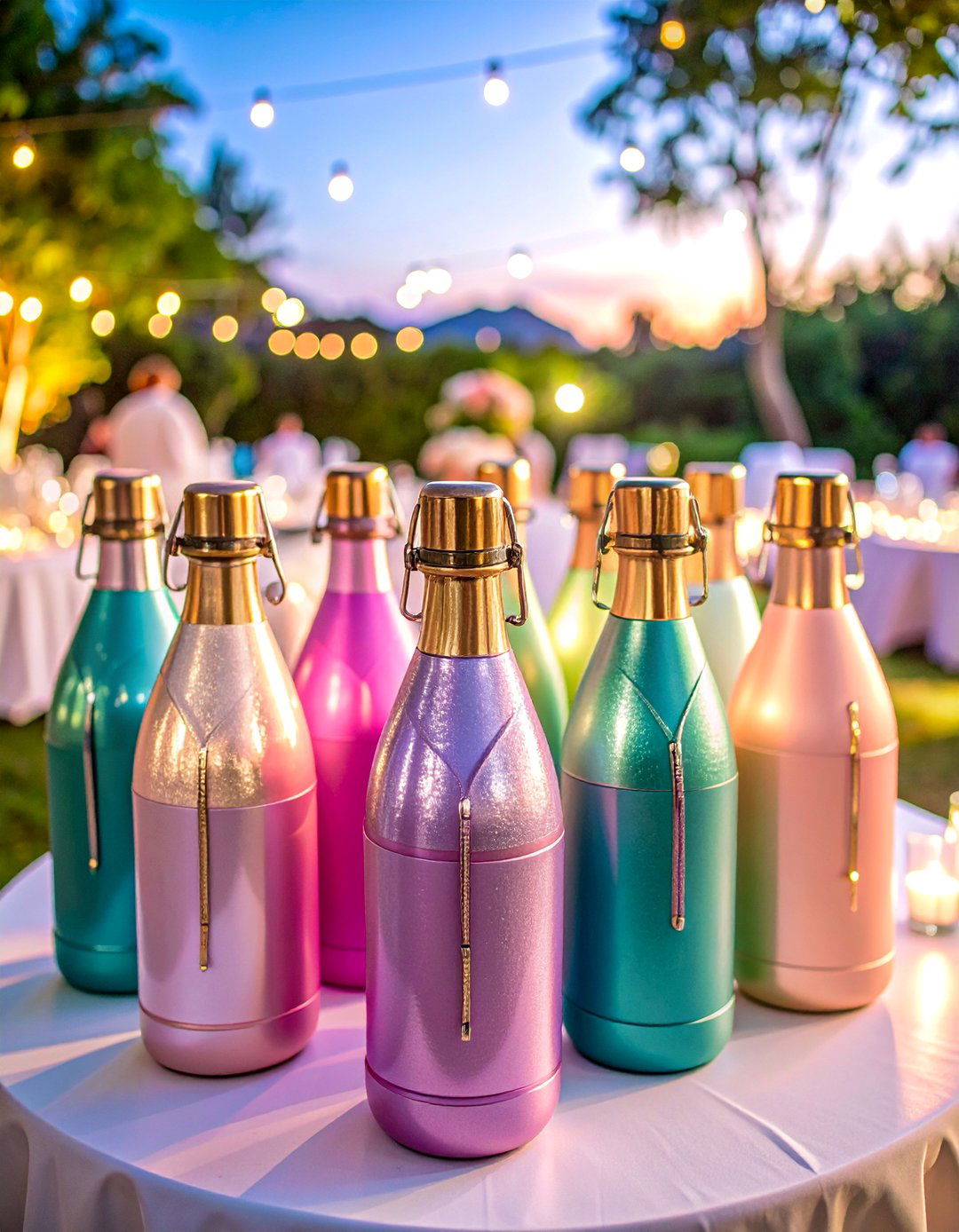
Leave a Reply